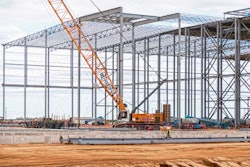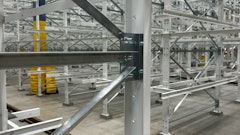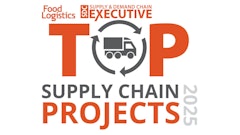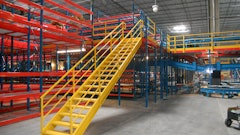
The Coronavirus disease (COVID-19) pandemic has shifted large parts of the economy, most notably with new demand in urban last-mile deliveries, closeness to consumer locations and reshoring supply chains in the United States.
Companies and logistics providers have vigorously worked toward solving the complexities of such a fast-changing landscape based on consumer behavior, prompting changes to how organizations will conduct business in the years to come. The Site Selectors Guild identified re-shoring and nearshoring, regionalization and last-mile delivery management as supply chain trends to watch in 2021. We’ll also see faster delivery service and a continued need for talent to fill thousands of jobs in the industry.
As companies consider strategic expansions and re-locations, they should ask themselves three questions centered on talent, shovel-ready land and speculative space availability and other resources that support international supply chain operations.
Does the region have a strong talent pipeline that will support business growth?
One of the first questions supply chain-related businesses should ask is whether the region has enough talent across business operations, or if there are adequate workforce development programs that can train for these roles quickly. A few crucial points to consider include a region’s higher education institutions and their student populations, additional training programs in the region for re-skilling and up-skilling and existing partnerships that help supply chain-related companies find talent.
For example, the Greater San Marcos Region, located at the heart of the Texas Innovation Corridor between Austin and San Antonio, is anchored by Texas State University, an emerging research institution with 38,000-plus students enrolled. Texas State’s McCoy College of Business offers a flex MBA program with a concentration in supply chain management, which provides a steady talent pipeline to approximately 250 supply chain-related companies in the region.
An additional 24 colleges and universities are located within a 50-mile radius of San Marcos, including Austin Community College (ACC). To address labor needs, ACC is reducing its tuition by 50% for 26 programs throughout 2021, including its heavy equipment operator training program, which has more than 1,000 open jobs in the region. An additional supply chain workforce development program includes Gary Job Corps’ vocational training for material handlers and transportation workers.
As demand for talent continues to become more prevalent in the supply chain industry, companies should take note of the higher education institutions and other workforce development programs that create courses and programs with specific outcomes to address immediate workforce needs.
How will current developments in the region foster our growth in the long run?
According to the World Economic Forum, demand for urban last-mile delivery is expected to grow by 78% by 2030. Same-day and instant delivery are the fastest-growing segments of last-mile delivery, increasing at rates of 36% and 17% per year, respectively. That puts a lot of pressure on growing supply chain companies as deliveries continue to get faster. While urban last-mile delivery grows rapidly, supply chain related companies should think about which markets have the greatest access to those city centers in the state, region and United States, and how current developments in that area will foster company growth while keeping pace with consumer demand.
Key points for supply chain companies to consider include shovel-ready land, affordable utilities and proximity to major highways and transportation infrastructure.
In the Greater San Marcos Region, there is direct access to major north-south and east-west interstates (I-35 and I-10 by route of SH 130, respectively). Along those highways, there are thousands of acres of available development sites. While larger cities organically build upward, the San Marcos region is strategically leveraging its outward expansion by building massive turnkey speculative spaces between Austin and San Antonio.
Last year, leaders of the City of Kyle (20 miles south of Austin) approved the development of Majestic Plum Creek Business Park, which will entail more than 500,000 square feet of speculative space as a mixed-use master-planned development. The business park will include class-A concrete tilt wall industrial buildings use for manufacturing, light industrial, assembly, distribution, e-commerce, retail/wholesale sales and warehousing.
Other nearby cities are also accommodating demand. The City of Lockhart, located due south of the developing Tesla Gigafactory, announced a 75-acre industrial park that will be located on SH 130, which connects I-10 with I-35. The industrial park, which will provide shovel-ready lots by late 2021, is suitable for the types of large industrial, manufacturing and distribution prospects that want to be in the region.
By considering markets that offer enough shovel-ready land that meet the needs for future expansions, and proximity to a substantial workforce, companies can think about longer term growth without hesitation.
What additional resources are available that will position us for success?
A recent Gartner study revealed that 33% of supply chain leaders have already moved their businesses out of China, or plan to do so by 2023, due to tariffs and a desire to establish more localized business operations closer to customers. As companies consider re-shoring and nearshoring their operations, they should think about all additional resources in a U.S. market that would be beneficial to international business operations. This includes airport accessibility for cargo freight, cost of doing business and future developments that will further position the region as a center for logistics.
In the Greater San Marcos Region, there are two major international airports less than an hour away -- Austin-Bergstrom, which ranks 46th for freight cargo capacity, and San Antonio International Airport, which has more than 277 million pounds of cargo move through it each year. Additionally, the San Marcos Regional Airport provides companies with international and domestic logistics support. The airport has 1,340 acres of developable land, as well as its Redbird Skyport, a 27,000 square foot training space and flight school.
On top of that, once fully realized, the San Marcos Air Rail & Truck (SMART) Terminal will allow for easy access to rail, truck or air transport through its 934-acre Dual Class 1 rail-served industrial park, bringing together all elements of supply chain operations in one location.
As businesses and supply chain companies continue to adapt to the fast-changing landscape of consumer behavior, expansions and relocations have to be strategic. Decisions based on available talent, development opportunities and regional resources will impact the bottom line of a company for years to come.





















